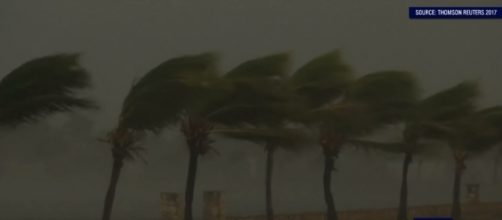Hurricane Irma hit Cuba, causing extensive damage to buildings and property. The powerful hurricane struck Camaguey Archipelago as a category 5 storm late on Friday. It was later downgraded to category three, but is expected to regain power as it approaches US state of Florida. This is the first category 5 hurricane in the history of Cuba since 1924.
Winds measuring 160 mph.
According to several reports, the hurricane brought heavy rain and winds of 160 mph to the northern coast of Cuba, forcing thousands to evacuate to safe areas. Sources say that a large number of small coastal towns in Cuba were flooded.
There also were reports of power cuts and walls collapsing in some areas of the island country. AFP news agency reported that there were no immediate reports of casualties.
Making its way to Florida
The hurricane is expected to make landfall in Florida on Sunday morning. Approximately 6.3 million people were ordered to evacuate from their homes, as major devastation is expected from high winds and extensive flooding. In Miami, beaches and streets usually packed with residents and tourists were deserted. Thousands of people took refuge in evacuation shelters, some of which are said to be already filled up.
The governor of Florida, Rick Scott warned residents about a storm surge that is expected to hit 15ft in some places.
“You will not survive,” he told a news conference. Mr. Scott further added that the state has never seen a storm as deadly as Irma.
President Donald Trump tweeted on Saturday that his administration is continuously monitoring the hurricane and urged everyone to heed the instructions from government officials.
Assuming that the hurricane hits Florida as projected, this will be the fourth category 5 storm to ever barrel into U.S. mainland. The last category 5 storm, Hurricane Andrew, struck the states 25 years ago in 1992. The other two storms are Camille in 1969 and an unnamed storm in 1935.
Unprecedented damage to the Caribbean.
Irma inflicted catastrophic damage on several Caribbean islands, claiming the lives of at least 22 people.
The biggest number of victims were reported in St. Martin and St. Barts, where at least eleven people have been confirmed dead. Remaining deaths were reported in U.S. Virgin Islands, British Virgin Islands, Barbuda, and Barbados.
In addition to those 22 deaths, Irma caused substantial damage to infrastructure and property. Homes, schools and hospitals were flattened, a large number of buildings were flooded, trees were ripped down, power lines and towers were toppled and communication networks went down. The governments are assessing the extent of damage, which is estimated to be worth millions of dollars, reports say.


